 NEWS: Big money being made off low-income earners in S.C.
NEWS: Big money being made off low-income earners in S.C.
BRIEFS: New voting machines to come, but so are longer lines
COMMENTARY, Brack: Dealing with Southern ghosts of the past
SPOTLIGHT: Municipal Association of South Carolina
MY TURN, McCoy-Lawrence: Voters aren’t getting voting machines they deserve
FEEDBACK: On Santee Cooper and a liberal arts education
MYSTERY PHOTO: Pretty rustic, huh?
S.C. ENCYCLOPEDIA: Slavery in South Carolina
NEWSBIG STORY: Big money being made off low-income earners in S.C.
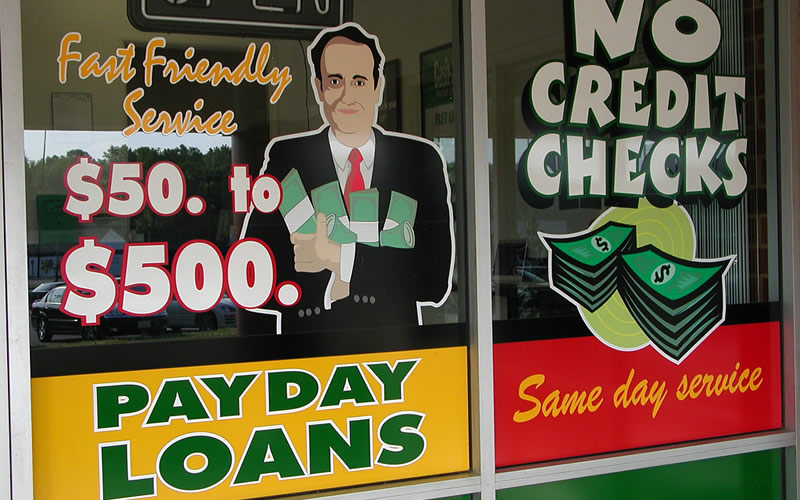
By Lindsay Street, Statehouse correspondent | Nearly a quarter billion dollars in fees were levied against some of the state’s lowest income earners in 2018 as they took out high-interest loans of less than $1,000, according to a new report.
In April, the Center for Responsible Lending issued a state-by-state look at fees generated from short-term, low amount loans that can charge triple digit interest rates borrowed against a car title or a future paycheck. South Carolina is 12th in the nation in the amount of fees: $57.8 million in payday loan fees and $187.3 million in car title loan fees.
The average income of those taking out the loans is $25,000 per year, report author Diane Standaert told Statehouse Report. In South Carolina, low-income earner advocate Sue Berkowitz said payday and car title lenders “target” poor and minority communities.
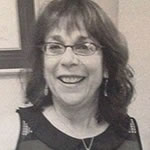
“There’s absolutely no question there is a lot of money going from low-income communities into the coffers of these companies,” said Berkowitz, executive director of S.C. Appleseed Legal Justice Center said. A year ago, the agency mapped where car title lenders and payday lenders had locations, which were often found in low-income communities and communities of color.
- Read S.C. Appleseed’s brochure on car title lending in South Carolina. Most title loans are between $601 and $2,500, it says. If a loan is taken out for $601 at a 25 percent interest rate and $150 is paid monthly, the borrower will consistently owe $750 every month, according to the group.
In a statement, payday lender Advance America said it provides a service to people who need access to capital through borrowing.
“Restrictions would do nothing to address South Carolinians’ very real financial needs. Their need for credit would not disappear, just this regulated borrowing option would,” a company representative wrote in a statement. The statement referred to its borrowers as “hardworking families.”
States are the ‘battleground’
According to Standaert, federal level regulation on these high-interest loans remains sparse, especially in recent years. During the Obama administration, rules were established for lenders to assess borrowers’ ability to repay the high-interest loans. The rules were set to go into effect August 2019, but now they have been delayed until at least November 2020. Former GOP S.C. Congressman Mick Mulvaney helped delay the rules when he led the Consumer Financial Protection Bureau, and U.S. Sen. Lindsey Graham, R-S.C., has filed legislation that would repeal those still-unrealized protections, Standaert said.
She called the federal actions “a big gift to the payday and car title lenders,” adding it was up to state policy on how much money is “drained” from low-income communities.
“States have long been the battleground for consumer protection on these issues. They are positioned to take action,” Standaert said. “It’s a matter of what the state legislature says is acceptable.”
South Carolina is one of 34 states that allow lenders to charge triple-digit rates. According to the report, 16 states and the District of Columbia have interest rate caps of about 36 percent annual percentage rate (APR). Federally, lenders are not allowed to charge military families more than 36 percent interest.
In South Carolina, payday and car title lending regulation falls under the S.C. Department of Consumer Affairs, which also regulates pawn shops. The two lending types are regulated differently, according to department administrator Carrie Grube-Lybarker.
In the last 20 years, two pieces of legislation passed the General Assembly and “tightened” regulations on the lending practices, she said.
In 2004, lawmakers passed a law that restricted accruing interest on car title loans. It also created a loophole: only limiting the regulation of car title loans repaid in fewer than 120 days. Grube-Lybarker said some companies chose to make loan repayments at 121 days in response. There are no caps on car title loans in the state, and Grube-Lybarker said some have up to 750 percent APR. Any rate above 18 percent must be reported to the agency.
At 750 percent APR on a $1,000 loan, a borrower would pay $7,500 just for the interest on the loan, according to a calculation by S.C. Appleseed. The monthly payment would be more than $700 a month.
“We can bring a lawsuit and ask a judge to (deem rates unconscionable),” Grube-Lybarker said. But, she said, that has not happened in the recent past.
A call to a lobbyist representing TitleMax in Columbia went unreturned.
In 2009, the state also tightened payday lending. Borrowers were entered into a database, and lenders needed to check eligibility of borrowers. Those with outstanding loans or with eight loans in one year are to be denied a new loan under the law.
The year that the new law was passed, more than 4 million payday loans were reported in the state — that’s nearly one for every person residing in the state that year. Grube-Lybarker said the following year, the number of payday loans saw “a dramatic decrease” to about 1 million.
In the statement to Statehouse Report, Advance America said the “current South Carolina laws provide a sound regulatory framework that protects consumers from bad actors while preserving essential access to credit.”
The lender warned against caps, saying states enacting caps “leave consumers with little choice but to turn to the costlier, riskier or unregulated alternatives that flourish in the absence of regulated options.”
For a $500 loan through Advance America in Eastover, a $75.50 charge is levied for the 14-day period, according to the company’s online calculator. The rate works out to just under 400 percent APR. See their calculator here.
Advance America has donated to Republicans and Democrats in the state legislature and mayoral campaigns in the state, according to S.C. Ethics Commission records.
What’s being done in Columbia
The General Assembly doesn’t appear hungry for more regulation of the industries, though a smattering of legislation was filed this session.
S.C. Sen. Gerald Malloy, D-Darlington, filed two bills this session: S. 63, which would cap interest rates for car title loans, and S. 56, which seeks to make it illegal to loan money against a paycheck. There were two similar bills filed in the House by S.C. Rep. Ivory Thigpen, D-Richland.
“We have to make certain that we do things that make economic sense rather than what would be characterized as usery,” Malloy told Statehouse Report. He said neither bill, both stalled in committee and without any other cosponsors, have been prioritized by his peers.
Grube-Lybarker said her agency has not made any recommendation to cap interest rates at this time, and there are no plans to do so in the immediate future. However, the agency is looking at how it restricts and regulates types of lending in the state.
“It would be a major revamp of statutes since 1982,” Grube-Lybarker said. She said it will be “well-thought out and vetted” with all parties to the table. A timeline for when that process could begin was not available. She said 2020 was likely too soon.
Malloy said it’s not too late for legislators to take action beginning in January.
“There would be some interest if we started pushing it for discussion,” he said. “We (have) got to watch what happens with the Feds and we got to at least try to emulate what they do with our armed services.”
- Have a comment? Send to: feedback@statehousereport.com
NEWS BRIEFS
New voting machines to come, but so are longer lines
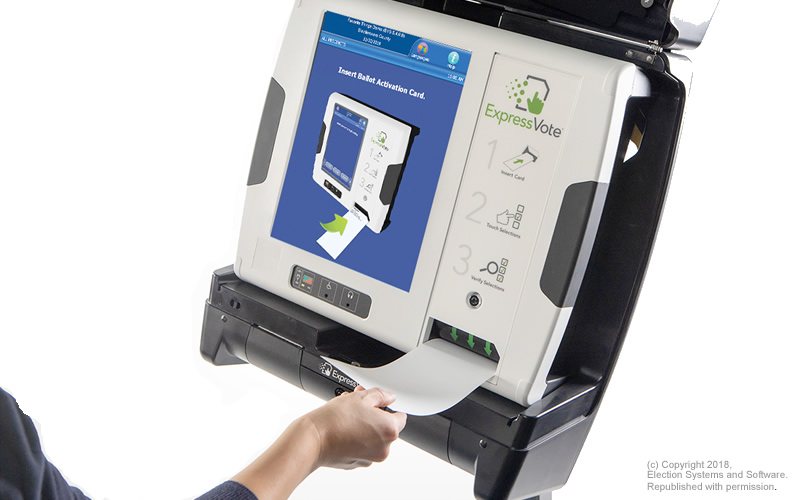
By Lindsay Street, Statehouse correspondent | South Carolina will spend $51 million on new voting machines before the 2020 presidential primaries, but voting advocate Lynn Teague warns the new machines will lead to longer lines.
It’s a claim that S.C. Election Commission spokesman Chris Whitmire didn’t dispute.
“We’ve added paper in the most efficient way we can. Adding paper to the process is going to take more time than the way we vote now,” he said. “Voting with a paper component is going to take more time … (but) I don’t think it’s going to be that big of a deal.”
Teague, who is vice president at the League of Women Voters of South Carolina, cited multiple issues with the new electronic machines, which will produce a printed, marked ballot that is then fed into a vote-tabulating machine.
Whitmire said the ExpressVote machines will offer new transparency for the state. Each printed ballot will be captured by scanners, and a picture of all ballots will be available through the commission website. Voters will have a chance to review their ballot selections before feeding it into the scanner, which reads a non-encrypted barcode on the ballot. Whitmire said any barcode reader can read the barcode.
Whitmire said S.C. voters will find the touchscreen vote selector “very familiar.”
The state election panel unanimously selected the Election Systems and Software’s ExpressVote voting system. The new machines will replace the state’s aging paperless system that has been in place since 2004.
“This system will not only provide voters with a dependable system for years to come, but it will also greatly enhance the security and resilience of our election process.,” election commission Executive Director Marci Andino said in a statement this week.
The purchase has come under scrutiny due to ES&S’s courting of Andino, who once served on a panel of elections directors with the company, and was given plane fare and hotel stays for her participation. In February, Whitmire called it “insulting” to think Andino’s decision was “affected by a plane ticket and a hotel room to learn about our voting system.”
- Read our February coverage on the state’s rush to replace its voting machines and the election commission’s response to the controversy.
- For more on South Carolina’s new statewide voting system, click here.
In other news:
![]() Medicaid, pensions eat up state budgets. A new report from Pew Trusts shows most state budgets are being consumed by Medicaid and pension expenses, while spending on education, infrastructure, state employees and local governments has not returned to pre-recession levels. Read the report here.
Medicaid, pensions eat up state budgets. A new report from Pew Trusts shows most state budgets are being consumed by Medicaid and pension expenses, while spending on education, infrastructure, state employees and local governments has not returned to pre-recession levels. Read the report here.
Education funding model explored. S.C. Revenue and Fiscal Affairs Executive Director Frank Rainwater gave a presentation to the S.C. Education Oversight Committee this week on the state’s funding model for public education. The presention went over the complicated way the state doles out money to districts. Rainwater’s office issued an education funding model report in May, with the intention of looking at ways to reform how the state funds education. Read it here. To see the archived video of Rainwater’s presentation this week, click here (“Monday, June 10, 2019 1:00 p.m. SC Education Oversight Committee”).
Ad hoc panel to study Department of Corrections. A House Legislative Oversight ad hoc committee will begin studying the S.C. Department of Corrections with a meeting at 10:30 a.m. June 18 in room 110 of the Blatt building. Read the agenda here.
Platts tapped to lead arts agency. Lancaster County educator David Platts has been named executive director of the S.C. Arts Commission effective July 1. The commission provides grants, directs programs and forges partnerships in the areas of arts education, artist development and community arts development. Read more.
National survey reflects 2020 black voter priorities. The Black Economic Alliance, a nonpartisan group founded by black executives and business leaders, released results of a nationwide survey focused exclusively on economic priorities for black Americans. A few takeaways:
- Nearly three-quarters for black Americans say they are dissatisfied with the economic situation for black Americans today;
- A large majority (81 percent) of black Americans say it is hard to achieve the American Dream;
- An overwhelming majority (82 percent) of black Americans say they disapprove of the job Donald Trump is doing as president. In the survey, 63 percent of respondents identifying as independent or Republican said they disapprove of Trump; and,
- More than two-thirds of respondents said they were comfortable with or enthusiastic with former Vice President Joe Biden should he win the Democratic nomination; Bernie Sanders came in at 58 percent, followed by Kamala Harris at 47 percent.
- Read the executive summary of the survey here.
2020 candidate calendar
 Throughout the campaign season, we are working to keep South Carolina informed of candidate events in the state. Have an event you want us to know about? Email us at 2020news@statehousereport.com. In the coming days:
Throughout the campaign season, we are working to keep South Carolina informed of candidate events in the state. Have an event you want us to know about? Email us at 2020news@statehousereport.com. In the coming days:
- O’Rourke: Former Texas Congressman Beto O’Rourke will spend three days in South Carolina next week. On June 14, O’Rourke will host a town hall with the Gullah Geechee Nation. On June 15, he will host a criminal justice town hall in North Charleston, a town hall in Columbia and another town hall in Sumter. On June 16, O’Rourke is scheduled to attend church services in Spartanburg followed by a town hall in Greenville. Read more.
- Booker: Meet U.S. Sen. Cory Booker, D-N.J., will be at a meet-and-greet 4 p.m. June 15 at Dellz Uptown in Charleston. Event info.
- On TV: The Black Economic Alliance will host a presidential forum noon to 4 p.m. June 15 for some Democratic candidates at the Charleston Music Hall. Candidates who will appear include Booker, O’Rourke, Indiana Mayor Pete Buttigieg and U.S. Sen. Elizabeth Warren of Massachusetts. Tickets required, but free. To be aired on BET.
- Clyburn’s World Famous Fish Fry: Many of the Democrats vying for the presidential nomination will stop in at Congressman James Clyburn’s annual World Famous Fish Fry June 21. It’s free and open to the public. More information here.
- State Democratic Convention: On June 22, the S.C. Democratic Party will have its annual state convention. At least 19 of the 23 declared Democratic presidential hopefuls are signed up to speak. Read more.
- Planned Parenthood abortion forum: On June 22, 11 Democratic presidential hopefuls will participate in Planned Parenthood Action Fund forum, which will start at 10 a.m. at the University of South Carolina campus. Read more.
Looking ahead
Click below for other items coming up in the Statehouse:
Find any bill
Have a comment? Send to: feedback@statehousereport.com
BRACK: Dealing with Southern ghosts of the past
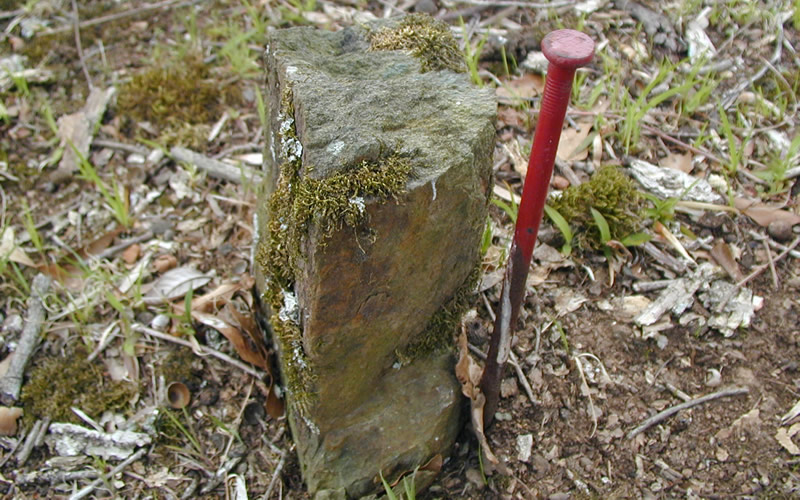
By Andy Brack, editor and publisher, part 1 of 2 | This is the story of three cousins. Well, they’re pretty sure they’re all cousins because they think they are linked genetically to the same man. But they’re not 100 percent sure because some of the records are lost.
 They do know, however, that they’re linked by circumstance and family to that man, a South Carolina plantation owner who moved his family and 14 slaves to Florida before the Civil War. Later he moved back to the Palmetto State, signed the state’s Ordinance of Secession, fought and served in the state Senate.
They do know, however, that they’re linked by circumstance and family to that man, a South Carolina plantation owner who moved his family and 14 slaves to Florida before the Civil War. Later he moved back to the Palmetto State, signed the state’s Ordinance of Secession, fought and served in the state Senate.
Charlie Smith of Charleston and Brenda Kinsler of Washington, D.C., met almost 20 years ago while doing genealogical research online. They discovered they were chasing down the family tree of John Herman Kinsler (1823-1902). He, like Smith, was white. Brenda Kinsler and her first cousin, writer Cynthia White of St. Petersburg, Fla., are black.
Smith says Brenda Kinsler gave him the gift of family that he never knew existed and that required some thought on how to use it. After years of research and a bond that blossomed and strengthened over time, the research buttressed a book, From Whence We Came, published last month.
“An unknown part of my family whose first association with the part of the family familiar to me, was rooted in kidnapping, human trafficking and the enslavement of our African ancestors by our German-Swiss ancestors,” Smith wrote in the foreword. “Enslavement is in fact how our family came into being. No amount of romanticizing can ever change the evil at the root of who we are today as the Kinsler family.
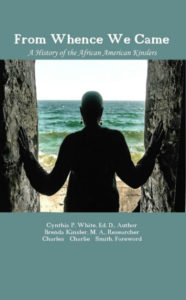 “Even if the first relationships from which our family grew had been consensual (and I have found no evidence that they were) the power imbalance between our white German-Swiss ancestors and our enslaved African ancestors was never about anything more than building the wealth of the German-Swiss ancestors at the expense of the lives of our African ancestors. When that system of enslavement transitioned to other forms of slavery after emancipation, our African ancestors were largely abandoned by our German-Swiss ancestors.”
“Even if the first relationships from which our family grew had been consensual (and I have found no evidence that they were) the power imbalance between our white German-Swiss ancestors and our enslaved African ancestors was never about anything more than building the wealth of the German-Swiss ancestors at the expense of the lives of our African ancestors. When that system of enslavement transitioned to other forms of slavery after emancipation, our African ancestors were largely abandoned by our German-Swiss ancestors.”
Brenda Kinsler says if she and Smith aren’t related by blood, they’re related by history like many Southern families today.
“We don’t know about the relationships back then,” she said. “All I know is the slaves and enslavers had very close relationships.”
At some point through the years, Brenda wanted to find the Kinsler slave cemetery. She and Smith visited the old family plantation near Blythewood in Richland County. The owner of the property led them to a graveyard.
“There are no words that can describe how I was feeling at that time,” Brenda remembered as she looked at about 20 unmarked graves, that, unusually, had headstones.
White, who joined the story to write the history of the family research, recalled visiting the cemetery: “It’s hard to describe the feeling. It was just one of those sacred moments. There was this connection.”
The new book memorializes the connection. It shares how complicated notions of family can be in the South. And the book serves as a guide for one way that black and white Southerners, still haunted by race, can start looking forward, not backwards.
White said she hoped the book would give an incentive to black Americans to learn about their past. “What I hope it will do is give them the sense of where they came from and they can look at where they are now.”
She also hopes white readers understand “that slavery does not define African Americans. It is not who we were but rather what was done to us. We are a vital part of this nation’s history. I think that we as a family and as people would want whites to acknowledge our humanity. …
“What happened to us was real and the vestiges of it still remain. Acknowledgment of the wrong inflicted is the first step. A heart change is a next step. Real change occurs when men and women are moved in their hearts to want for others what they want for themselves and to accept that all deserve to live freely, equitably and justly in our society.”
- Next week: Thoughts on ways to embrace racial healing
- Andy Brack’s new book, “We Can Do Better, South Carolina,” is now available in paperback via Amazon.
- Have a comment? Send to: feedback@statehousereport.com.
SPOTLIGHT: Municipal Association of South Carolina
 The public spiritedness of our underwriters allows us to bring Statehouse Report to you at no cost. This week’s spotlighted underwriter is the Municipal Association of South Carolina. Formed in 1939, the association represents and serves the state’s 271 incorporated municipalities.
The public spiritedness of our underwriters allows us to bring Statehouse Report to you at no cost. This week’s spotlighted underwriter is the Municipal Association of South Carolina. Formed in 1939, the association represents and serves the state’s 271 incorporated municipalities.
The Association is dedicated to the principle of its founding members: to offer the services, programs and products that will give municipal officials the knowledge, experience and tools for enabling the most efficient and effective operation of their municipalities in the complex world of municipal government.
- Learn more: MASC.
McCoy-Lawrence: Voters aren’t getting voting system they deserve

Editor’s Note: The State Election Commission announced this week it would spend $51 million on a new statewide voting machine network. As offered in this space over the last year, the League of Women Voters closely watched the process and suggested other options. Here’s a reaction to this week’s news.
By Christe McCoy-Lawrence, exclusive to Statehouse Report | The League of Women Voters of South Carolina is, of course, distressed that the state has chosen to pay more money to get less of a voting system than what it could have obtained and than what the citizens of South Carolina deserve.
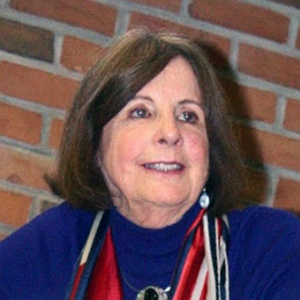
We had hoped for a new voting system that was primarily hand-marked paper ballots scanned at the precinct. We know that such a system could have been acquired for about half the cost of the planned new system.
We had hoped for a system that would lead to shorter lines at the polling places. Reverting to hand-marked paper has been shown to reduce wait time for voters. South Carolina’s wait times are often among the worst in the nation, and staying with an electronic system is likely to ensure that long lines continue to be the norm.
We had hoped for a system that provided voter-verifiable ballots. With the new system, the election authorities will be able to provide a statistical verification of the results, but voters will not be able to ensure that their ballot choices will be counted as they see them on the printed paper.
 We had hoped for a system that had in it as little software as possible. The vendor of the current system has twice been unable to write software without some errors that have led to votes being uncounted or miscounted. The new system uses the same vendor as the current system, and we will not know for some time (if ever) whether they have learned how to write correct software.
We had hoped for a system that had in it as little software as possible. The vendor of the current system has twice been unable to write software without some errors that have led to votes being uncounted or miscounted. The new system uses the same vendor as the current system, and we will not know for some time (if ever) whether they have learned how to write correct software.
We had hoped for a system with as little electronic machinery as possible, because the maintenance cost for that hardware is a significant burden on the counties. Richland County, for example, has been paying more than $100,000 per year in hardware maintenance costs. We do not know yet what the new fees will be, but this burden on the counties will continue to be a problem and will take money away from other important election needs.
We had hoped for a system that did not require the purchase of some 13,500 voting computers. That money could have been spent to improve poll worker training, polling place access, location, and accessibility, and a better overall experience for South Carolina voters. Instead, those funds will be unavailable for the general purposes of improving elections.
We had hoped that South Carolina voters could expect a better system, and thus a better election experience. Since a voting system has a projected lifespan of fifteen years, it seems that fulfilling that expectation may have to wait until 2034.
Christe McCoy-Lawrence of Holly Hill is co-president of the League of Women Voters of South Carolina.
- Have a comment? Send to: feedback@statehousereport.com..
FEEDBACK
Keep Santee Cooper a publicly-owned utility
To the editor:
![]() No one could argue with Mr. Brogdon’s statement that a restructured Santee Cooper is in the best interest of its customers and our state. Public utility companies have no incentive to conserve because they make more money by selling more, whereas a public utility would have the interest of the people. In addition, the private companies are in it for the investors and investment. They don’t think about the citizens, especially not the low-income citizens. The rates are set based on cost of investments.
No one could argue with Mr. Brogdon’s statement that a restructured Santee Cooper is in the best interest of its customers and our state. Public utility companies have no incentive to conserve because they make more money by selling more, whereas a public utility would have the interest of the people. In addition, the private companies are in it for the investors and investment. They don’t think about the citizens, especially not the low-income citizens. The rates are set based on cost of investments.
Granted there are some drawbacks to publicly owned utilities, but creative methods can be used to address infrastructure costs to keep rates down. South Carolina would do well to follow the 100 year old example of Nebraska and keep Santee Cooper a publicly owned system that would offer involvement of the community in decision making instead of allowing outside corporations to use us to make money that would be taken out of the state and would not benefit the people of South Carolina.
— Cassandra Fralix, Lexington, S.C.
On a liberal arts education
To the editor:
Liberally spread the sesame seeds on the topping in my recipe means, “don’t be afraid to use too much” or “be generous” or “it’s OK to spill over.” You get the idea; err on the side of too much rather than too little because more enhances the richness of what you will be consuming. It certainly does not suggest conserving the sesame seeds.
What is wrong with a liberal education? Clearly in a liberal education there are too many ideas to consider, ways of looking at things or people sharing the human condition that lead us down the path of Christian thinking to, “Love one another” as that would be too many to love. Where would we draw the line? Christians, not Muslims, not refugees, not them.
How should education be improved? Liberally narrowing down educational content to rule out the excess of too much is the alternative path to improving education by focusing on such things as employment ready skills and job ready, providing ready blinders to the exclusion of teaching values, ethics and doing the right thing arrived at by thought, metaphor and parental guidance. Besides, we need people, even our representatives to easily and readily fall into line behind our leader or our policies.
— Fred Palm, Edisto Island, S.C.
Send us your thoughts … or rants
We love hearing from our readers and encourage you to share your opinions. But you’ve got to provide us with contact information so we can verify your letters. Letters to the editor are published weekly. We reserve the right to edit for length and clarity. Comments are limited to 250 words or less. Please include your name and contact information.
- Send your letters or comments to: feedback@statehousereport.com
Pretty rustic, huh?
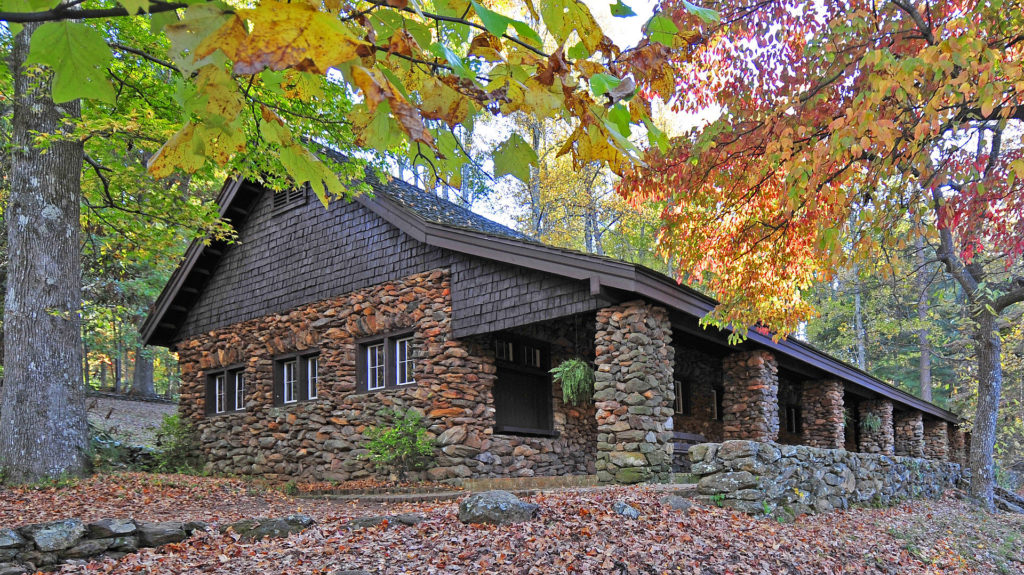
This looks like a pretty interesting, rustic place. Where is it? Send your guess about the location of this photo to feedback@statehousereport.com. And don’t forget to include your name and the town in which you live.
Our previous Mystery Photo
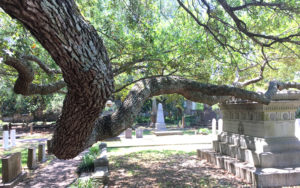 The subject of our June 7 mystery, “This one could be tough,” wasn’t too tough for history buffs who read Statehouse Report. The photo showed the cemetery of St. Philip’s Church on Church Street in Charleston. It showed a big tomb marked “Calhoun,” but was for John Caldwell Calhoun. His more famous grandfather, former Vice President John C. Calhoun, is buried nearby.
The subject of our June 7 mystery, “This one could be tough,” wasn’t too tough for history buffs who read Statehouse Report. The photo showed the cemetery of St. Philip’s Church on Church Street in Charleston. It showed a big tomb marked “Calhoun,” but was for John Caldwell Calhoun. His more famous grandfather, former Vice President John C. Calhoun, is buried nearby.
Three cheers for George Graf of Palmyra, Va.; Jim Pfeiffer of Greenwood; Addison Ingle of Charleston; Dale Rhodes of Richmond, Va.; Jean Prothro, Jay Altman and Donna McGreevy, all of Columbia; Bill Segars of Hartsville; Charles E. Davis of Aiken; Philip Cromer of Beaufort; Frank Bouknight of Summerville; Elaine Huff-Lowe of Inman; David Lupo of Mount Pleasant; Fairey Mock of Chapin; and Greg Nowell of West Union.
Lupo shared that he identified the cemetery by happenstance: “I happened to read this week’s Statehouse Report while waiting for the start of a Piccolo Spoleto concert in St. Philip’s Church in Charleston. After the concert, I was able to walk across the street to compare the mystery photo to the tomb of John C. Calhoun in St. Philip’s west cemetery. A few points of interest: Calhoun, a Calvinist, attended the Huguenot church, not St. Philip’s; and during the Civil War, his remains were moved to an unmarked grave in the east cemetery lest the Union soldiers find and desecrate his grave.”
Bouknight and others noted that the tomb shown in the photo was of Calhoun’s grandson, John Caldwell Calhoun (1848-1918). Bouknight wryly added, “Most important historical fact was he was a Gamecock, class of 1862.”
Prothro said, “Buried here are revolutionaries, politicians, confederates and artists. Among them are Col. William Rhett, known as the “Scourge of the Pirates,” charged with bringing the murderous Blackbeard and Stede Bonnet to justice. Edward Rutledge, a signer of the Declaration of Independence, Charles Pinckney, a signer of the Constitution, and John C. Calhoun, a U.S. senator and vice president of the U.S. also are interred here.
Cromer shared other notables buried in the cemetery include Other notables buried in the churchyard include Robert Smith (1st Bishop of SC and 1st President of the College of Charleston); ; Christopher Gadsden (founder and leader of the Charleston Sons of Liberty, delegate to the 1st and 2nd Continental Congresses, and designer of the Gadsden Flag); Rebecca Motte (heroine of the Revolution); Alexander Garden (Scottish Anglican priest and rector of St. Philip’s Church in 1700’s); and DuBose Heyward (American author who wrote “Porgy” which the Gershwin brothers turned into “Porgy and Bess”).
Graf added, “According to genealogytrails.com, known as the lighthouse church because a light placed in its steeple helped guide ships to port, St. Philip’s was constructed 1835 to 1838. Charlestonians are buried in the graveyard next to the church. Non-Charlestonians, including John C. Calhoun, are buried on across the street.”
- Send us a mystery: If you have a photo that you believe will stump readers, send it along (but make sure to tell us what it is because it may stump us too!) Send to: feedback@statehousereport.com and mark it as a photo submission. Thanks.
S.C. ENCYCLOPEDIA
HISTORY: Slavery in South Carolina
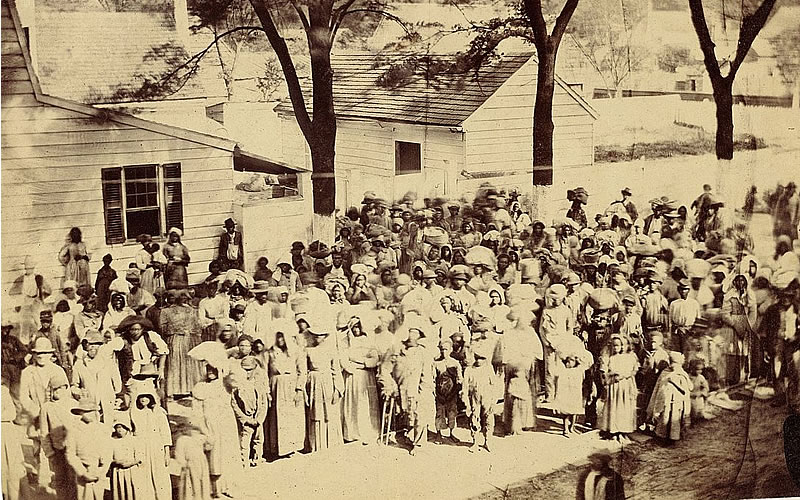
Editor’s Note: This an excerpted version of the full article on slavery, which can be found here in the S.C. Encyclopedia.
S.C. Encyclopedia | Africans were present at the founding of the English colony in South Carolina and within several decades became a majority. …(I)n plantation colonies African slaves came to be the universal solution to problems of labor when other solutions, including white indentured servitude and bound Native American labor, proved inadequate. South Carolina was distinctive, however, in that it was alone among England’s colonies in continental North America in preferring African labor to the former. … Africans were imported in significant numbers from about the 1690s, and by 1715 the black population made up about sixty percent of the colony’s total population. This marked another distinctive feature of South Carolina, for it was the only colony in English North America where this proportion existed. …
The onset of cotton production [after invention of Eli Whitney’s cotton gin in 1793] contributed to a substantial increase in the slave population, and by 1830 the slave population was almost equal to the white population. This was in contrast to the lowcountry, where blacks had outnumbered whites since the beginning of the eighteenth century.
The expansion of slavery throughout the state led to the full maturity of the slave society in South Carolina. By 1860, 45.8 percent of white families in the state owned slaves, giving the state one of the highest percentages of slaveholders in the country. During the antebellum era the majority of slaves lived on plantations claiming more than twenty slaves, while the majority of slaveholders owned far fewer than twenty slaves.
Largely concentrated in places such as the rice regions of the lowcountry and fertile cotton regions such as Sumter District, slaves created communities shaped as much by their own interactions as by their relationships with whites. Slave cabins on large plantations were often built in rows on either side of dirt roads or “streets” relatively close to the fields but some distance from the masters’ houses. This arrangement provided both physical and to some extent psychological distance between masters and slaves, allowing slaves some autonomy once the workday was over, a luxury that was often denied house servants and those living on small farms. The slave family was generally made up of a mother and a father living in a cabin with their children and perhaps extended kin.
Slave men and women were often married and lived in monogamous relationships, although strictures against premarital sex were often not closely adhered to in the slave communities. Despite the real possibility that a husband or wife could be sold, large numbers of slave couples lived in long-term marriages, and most slaves lived in double-headed households. When suitable husbands could not be found on plantations, masters often allowed “abroad” marriages uniting men and women from neighboring plantations. It was in a master’s financial interest to allow these unions because the more children a slave woman had, the more slaves the master could claim as his property. The average age of childbearing among slave women in the antebellum South was nineteen years old, while the average age for white women was twenty-one.
Once weaned from their mothers, and sometimes even before, slave children on large plantations were usually cared for and watched after by older slave women while their mothers went back to work in the fields. Children were initiated to work at the age of five or six, learning how to take orders and fulfill small tasks, and on cotton plantations they helped with the labor-intensive job of picking cotton. By the age of ten or twelve they were fully initiated into the world of adult work, although they were not expected to do the work of a full hand until about age sixteen.
While the slave’s work regime was intensive, slaves by no means passively acquiesced to the whims of masters. The many ways that slaves resisted the institution of slavery have been major themes of historical literature over the years. Over time, slaves negotiated rights and customs that allowed them to build close-knit communities and develop family bonds. These informal customs were recognized by masters who wanted to keep slaves as productive as possible. Everyday forms of resistance such as work slowdowns and breaking tools were used by slaves in this complicated negotiating system. Slaves customarily received part of the day Saturday and all day Sunday off from work in the fields, using this time to cultivate their own provision grounds, worship with family and friends, and court the opposite sex, among myriad other activities.
The most extreme form of resistance, open revolt, was not common in antebellum South Carolina, but slave violence against whites was a common occurrence, despite the fact that slaves convicted of committing such acts faced extreme punishments ranging from death to severe whipping. Slave runaways, those who in effect stole themselves, were numerous, as the ubiquitous advertisements in antebellum newspapers posting rewards for their capture attest. The goal of many was to escape to the North and freedom, but this was a difficult journey that only the fittest and most determined successfully completed. Many runaways fled temporarily, hiding close by with the support of the slave communities, in order to escape punishment or to protest actions taken by their masters.
Freedom came for all slaves in South Carolina as a result of the Union invasion of the state during the Civil War. The hard times associated with the slave regime did not end with emancipation for the state’s freedmen and freedwomen, but the family and community bonds forged during slavery proved invaluable assets during the Reconstruction era.
— Excerpted from an entry by Daniel C. Littlefield. This entry may not have been updated since 2006. To read more about this or 2,000 other entries about South Carolina, check out The South Carolina Encyclopedia, published in 2006 by USC Press. (Information used by permission.)
Available in paperbrack, err, paperback
Now you can get a copy of editor and publisher Andy Brack’s We Can Do Better, South Carolina! ($14.99) as a paperback.
The book of essays offers incisive commentaries by editor and publisher Andy Brack on the American South, the common good and interesting South Carolina leaders, such as former U.S. Sen. Fritz Hollings, civil rights advocate Septima Clark, former S.C. Gov. David Beasley and more. There also are discussions on civil rights struggles with which the Palmetto State continues to grapple. as well as commentaries on politics, governments, the hangovers of South Carolina’s past and her future opportunities.
We Can Do Better, South Carolina! is also available exclusively as a Kindle book for $7.99. Click here to purchase a Kindle copy.
- If you have a comment or questions about the book, please let us know at: feedback@statehousereport.com.
ABOUT STATEHOUSE REPORT
Statehouse Report, founded in 2001 as a weekly legislative forecast that informs readers about what is going to happen in South Carolina politics and policy, is provided to you at no charge every Friday.
- Editor and publisher: Andy Brack, 843.670.3996
- Statehouse correspondent: Lindsay Street
More
- \Mailing address: Send inquiries by mail to: P.O. Box 22261, Charleston, SC 29407
- Subscriptions are free: Click to subscribe.
- We hope you’ll keep receiving the great news and information from Statehouse Report, but if you need to unsubscribe, go to the bottom of the weekly email issue and follow the instructions.
- © 2019, Statehouse Report. All rights reserved.















 We Can Do Better, South Carolina!
We Can Do Better, South Carolina!
Pingback: Statehouse Report – VIGNETTES: How to make S.C. more resilient